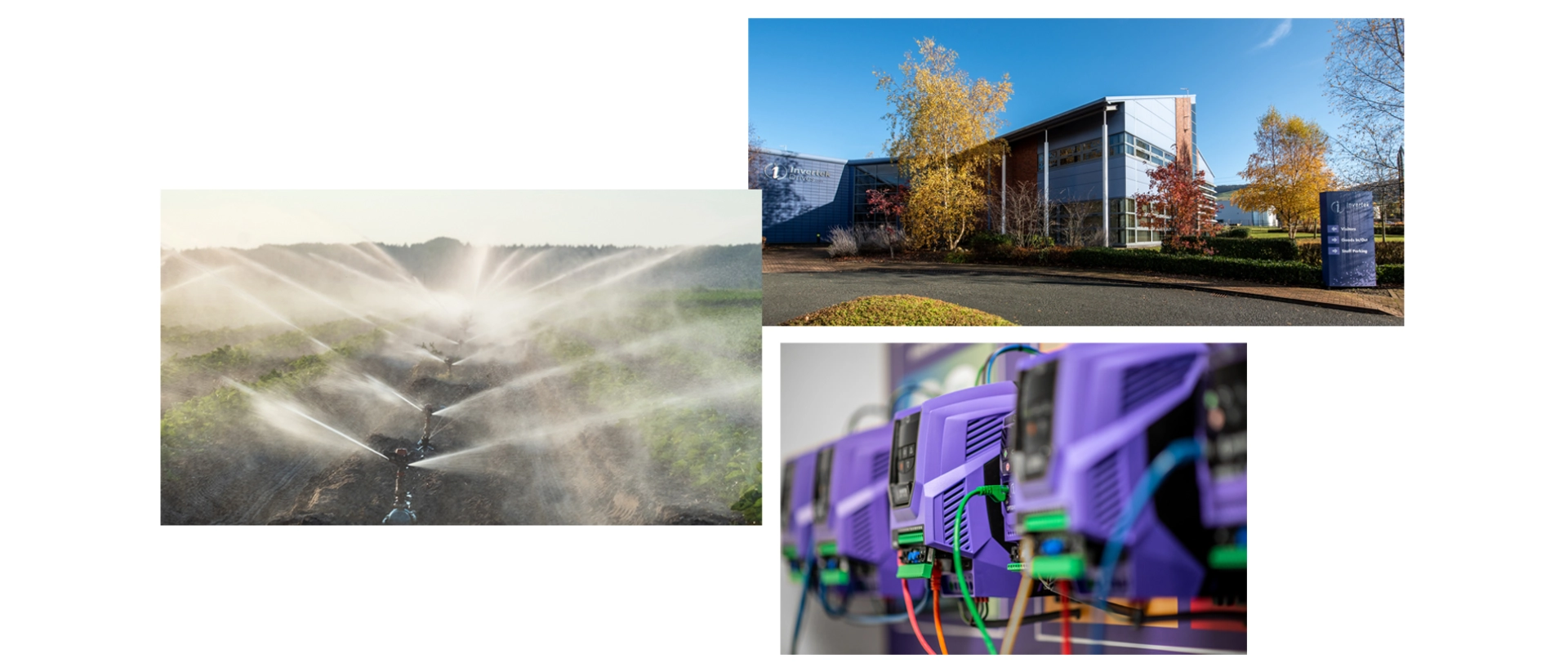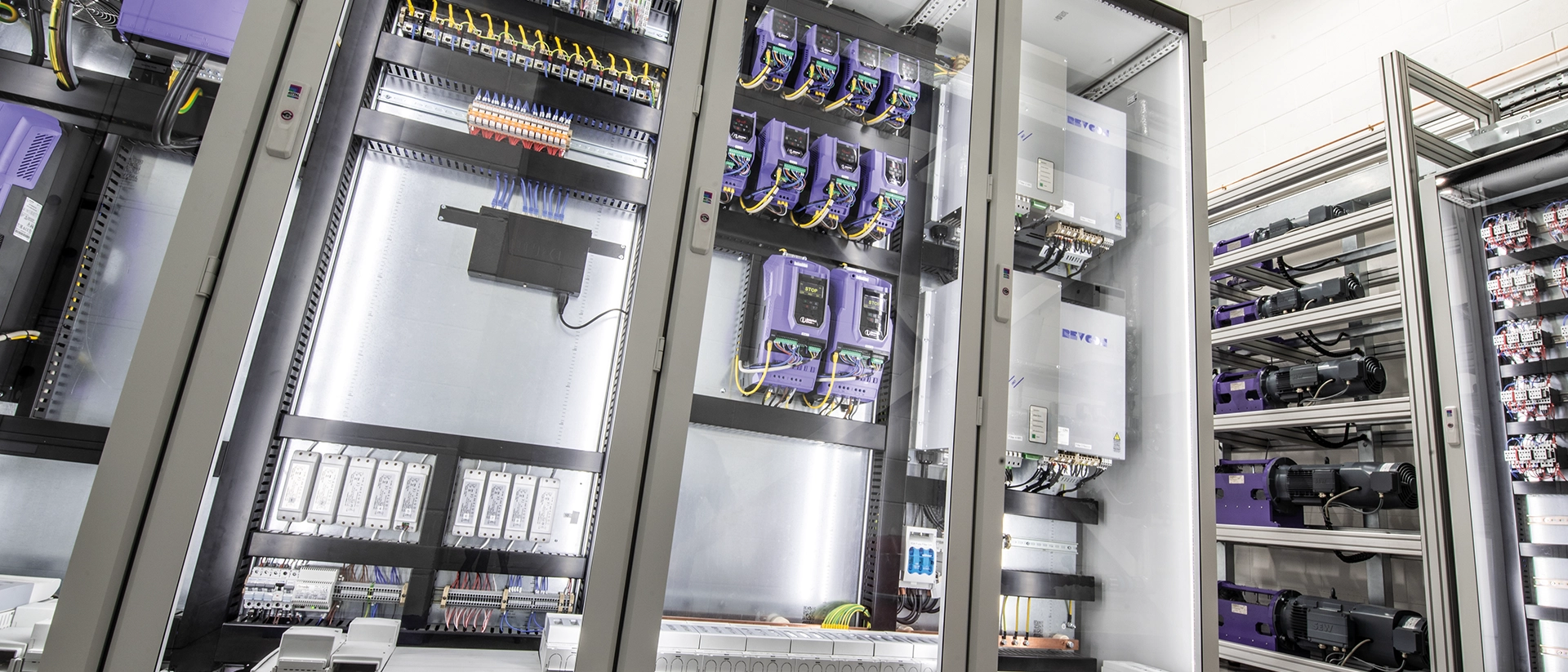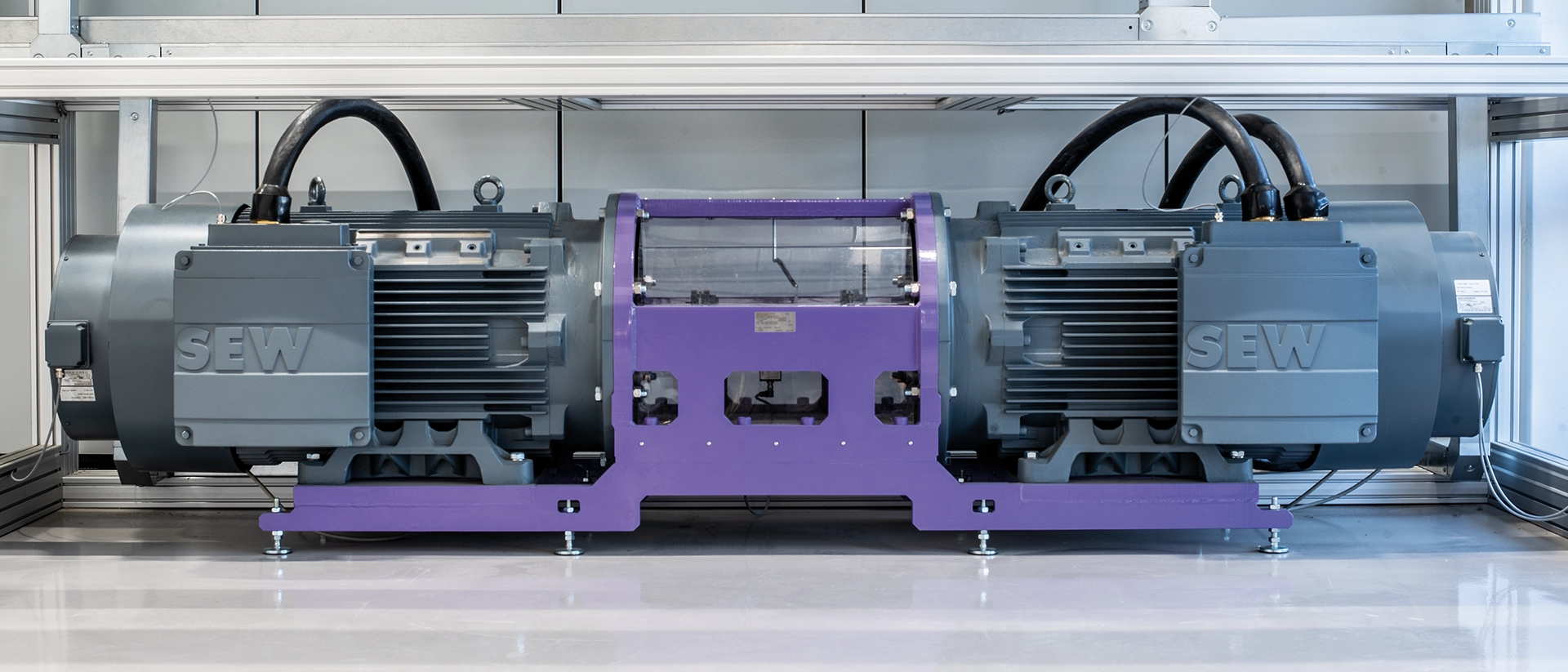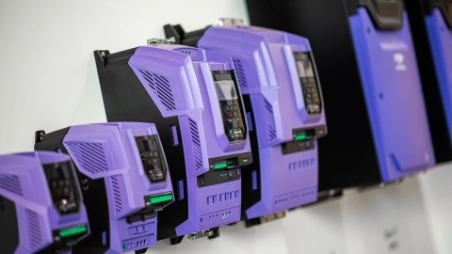Invertek | Intelligent technology: solar pumps
General drive technology


Dave Smith
Sales, KTR UK
Unlike urban and industrial areas, arable and agricultural land is very often distant from mains water and electricity supplies. As a result, farmers and landowners encounter the challenge of effectively irrigating their land when rain fails to fall. The same scenario arises in dry climates. When rain becomes scarce, irrigation solutions are needed which can extract water from underground wells to the surface. British variable frequency drive (VFD) manufacturer, Invertek Drives, have developed VFDs specifically for these applications. They are designed to work off photovoltaic (PV) systems. Their ‘Optidrive P2 Solar Pump’ VFD is designed to ensure a constant water supply enabled by solar energy produced through PV arrays. Thanks to this development, costly and environmentally unsound diesel generators become redundant. With the help of test benches, Invertek simulates and tests how effectively this technology will work in the field.

Solar-driven water supply
Invertek has invested in 15 test beds solely for research and development at their global innovation and manufacturing facility at Welshpool, Powys, UK. This is where the British company tests VFDs with power output ranging between 0.37 and 250 kilowatts. During testing, it is critical to simulate real world application scenarios, and one area where Invertek is highly successful on a global scale is with VFDs controlling solar-powered pumps. Principally, these are water pumps that draw their electrical energy fro PV arrays.
“It‘s a smart technology,“ says Invertek’s research and development engineer Jack Butler. In remote agricultural areas with little rain, and particularly in desert regions, the Optidrive P2 Solar Pump VFD makes an important contribution to emission-free water supplies in agricultural scenarios. And as Butler comments, “Using our technology, no one has to drive out to refuel any diesel generators.”
We have created optimum conditions with our new test beds for testing our drives under the prevailing conditions for different applications. KTR supplies reliable components for this purpose. Thanks to this investment, we are faster at evaluating development work in both real and practical term. This way we save time to market readiness.
Jack Butler
Research and Development Engineer, Invertek Drives

Torques on the testbed
Invertek is steadily pushing ahead, developing the highly effective conversion of sunlight into mechanical pumping power while validating its work in its newly built test bay. Each of the 15 test beds simulate a real environment and, with the help of 27 access points, all the necessary data for analysis is provided. The most important parameters investigated include speed and torque. Based on experience gained with KTR couplings, Invertek also relies on expertise from Rheine in this complex area.

A DATAFLEX torque measuring shaft, in combination with RADEX-NC backlash-free and torsionally stiff servo lamina couplings, is used to determine the prevailing torques on the pump motor’s output shaft. Invertek have taken a scaled approach to testing their range of variable frequency drives. Fourteen different DATAFLEX size combinations from 16 to 70 cover the power bandwidth of the modular system test benches, with nominal torque between 30 and 3,000 Nm. A further advantage of this system is that the torque measuring shaft operates simultaneously as a feedback for the speed measurement via an integrated encoder. This is also important for measuring the variable frequency drives behaviour under changing operating conditions when it comes to control accuracy of the drive electronics. Last but not least, Invertek VFDs offer application-optimised special functions for the respective uses that go beyond pure speed control.
















